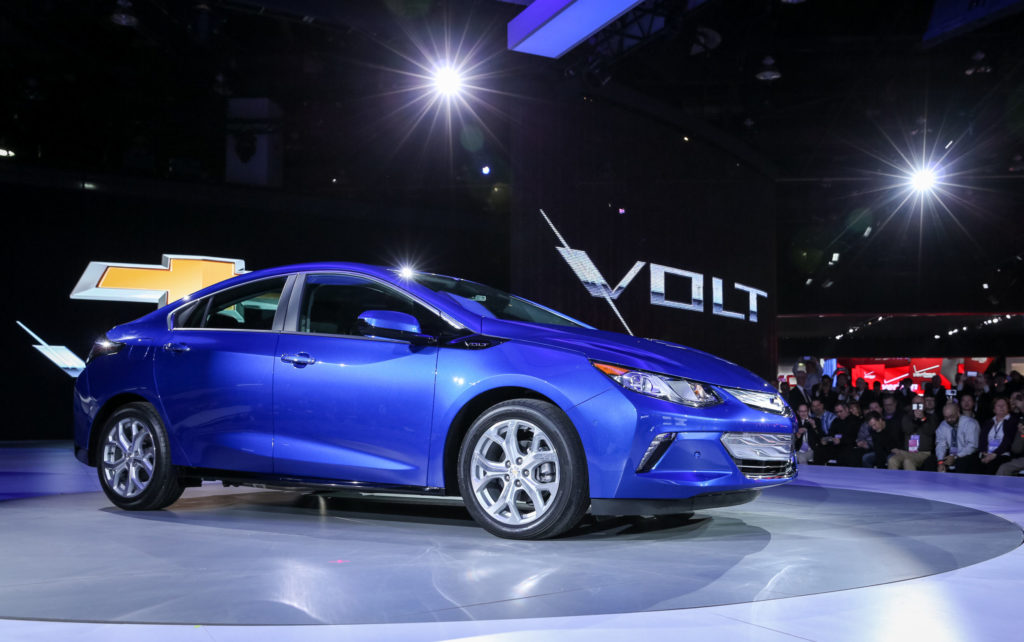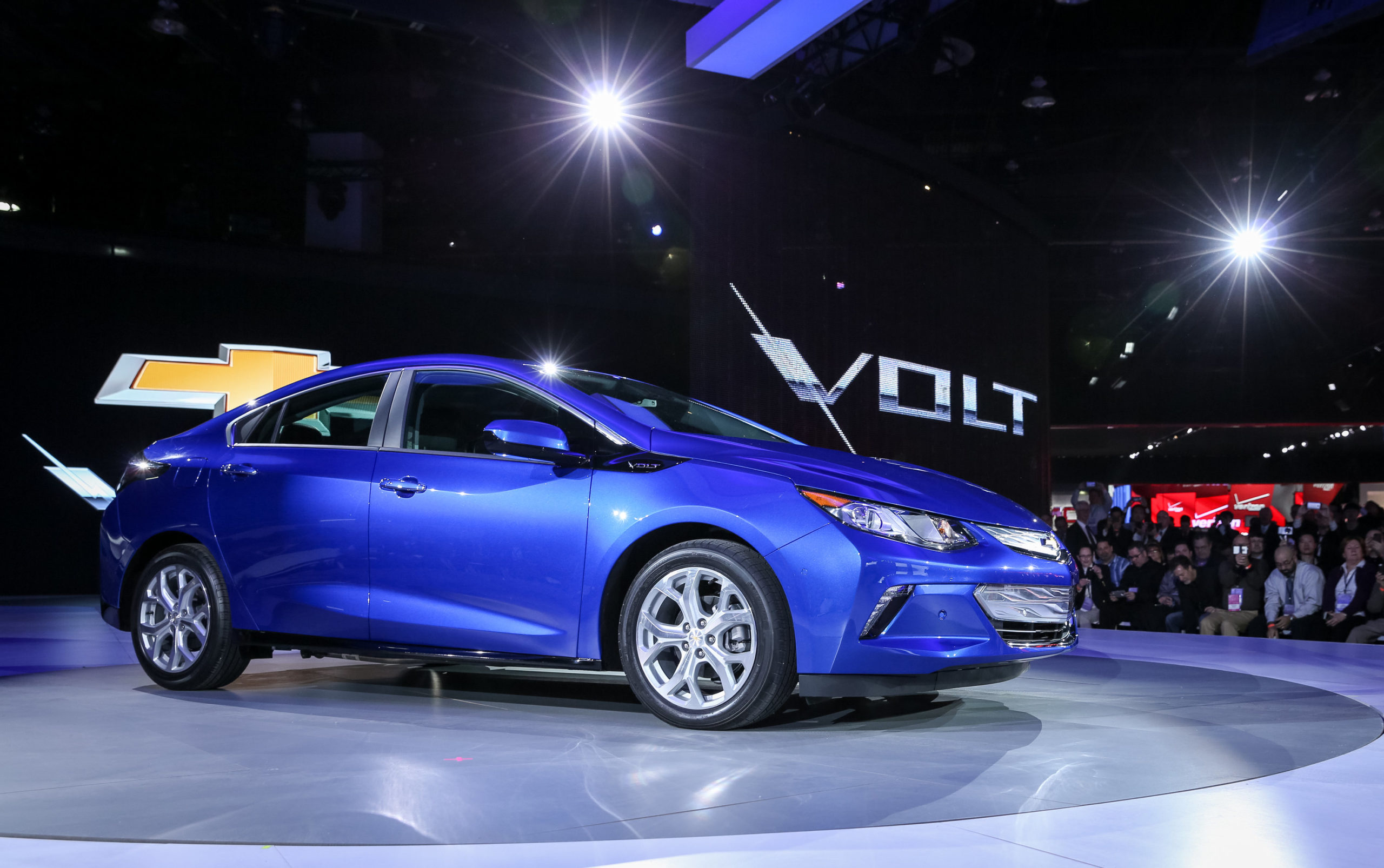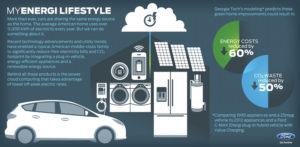One drawback of some electric hybrid vehicles is what is called “range anxiety.” It’s the worry drivers feel that their car won’t go far enough on its electric battery. The Toyota Prius Plug-In can travel only 10-15 miles on a fully charged battery; the Ford Fusion Hybrid Plug-In, only 19 miles; and Ford’s C-Max Energi Plug-In, 21 miles. The 2015 Chevy Volt has turned those numbers on their head by creating an electric car that offers 50 miles of EV (electric) range per fully-charged battery.
The 2015 Volt was unveiled last week in Detroit at the North American International Auto Show (full disclosure: I was a guest of General Motors, but under no obligation to give any of their vehicles a favorable review). I haven’t had a chance to test drive it yet, so I can’t speak to how it performs on the road. But I did take a look at the specs and get behind the wheel, and I liked a lot of what I saw.
My first priority is fuel efficiency. I want to use the least amount of gasoline possible, given the impact burning gas has on climate change and air pollution. In that regard, the Volt offers the distinct possibility of never having to buy gasoline unless you’re taking it on a long trip. “Volt owners complete more than 80 percent of their trips without using a drop of gasoline,” said Andrew Farah, vehicle chief engineer. Even when gas is used to extend the vehicle’s range (which is how a plug-in hybrid works), drivers are expected to be able to travel more than 1,000 miles on average between gas fill-ups, for an average fuel efficiency of 41 mpg.
After fuel efficiency, I want a car with uncomplicated technology and enough performance to make highway driving uncomplicated. The Volt seems to deliver. It is easy to recharge the battery using a standard 120 Volt outlet; the battery can be recharged any time it’s needed, but most drivers recharge it overnight and on the weekends when their electricity rates are particularly low. A 120V portable cord conveniently stores on the left side of the Volt’s rear cargo area for easy accessibility. It’s also easy to keep track of how much charge is left in the battery, so the driver knows in advance when the car will switch over to gasoline mode. As for performance, the car can go from zero to 60 mph in 8.4 seconds, which seems plenty fast to me.
Safety is also on my priorities chart. A standard rear-vision camera now comes with the Volt to help drivers avoid backing into hard-to-see objects. The vehicle also comes with ten standard airbags, including driver and front-passenger knee air bags. Additional active safety features offer lane keep assist with lane departure warning, side blind zone alert with lane change alert, front automatic braking, and advanced park assist, among several other benefits.
What about design? If you’re looking for something with a sleek, sporty design, the Volt looks the part. It seems to have an easy-to-read display panel on the dashboard, and there’s a small third seat in the back to make it possible to carry a total of 5 people in the car. I’ll have a better sense of the design features once I give it a test drive later this year.
Cost and Availability
The Volt goes on sale in the second half of 2015. It is expected to retail for around $30,000. Check state and federal rebate options to help reduce the price by a few thousand dollars.
RELATED ELECTRIC CAR POSTS


















